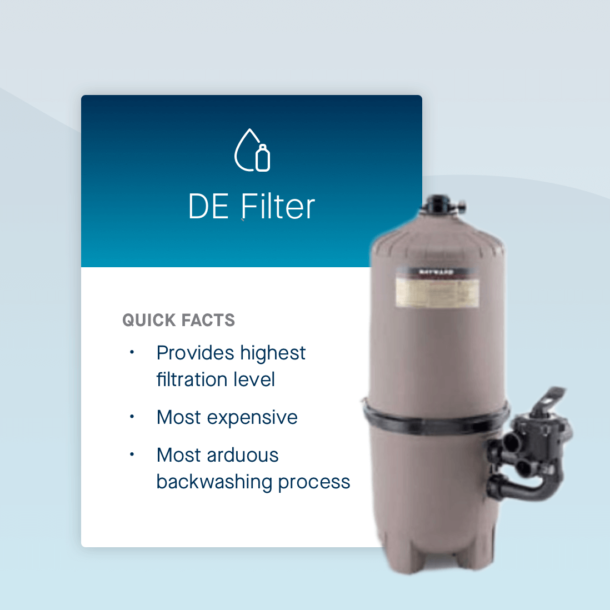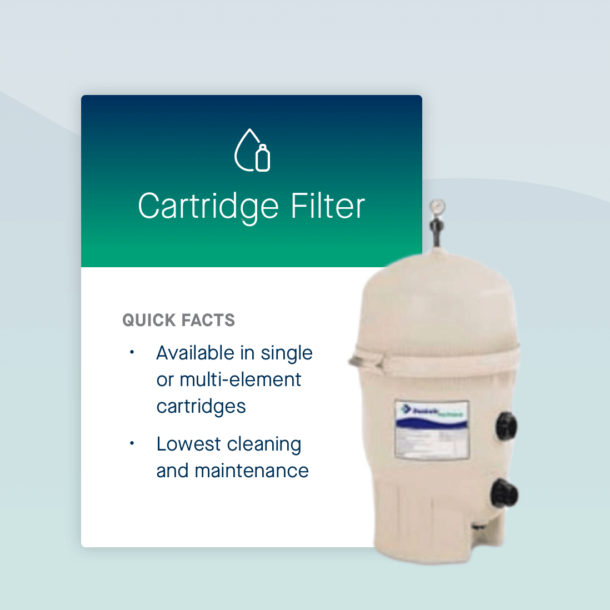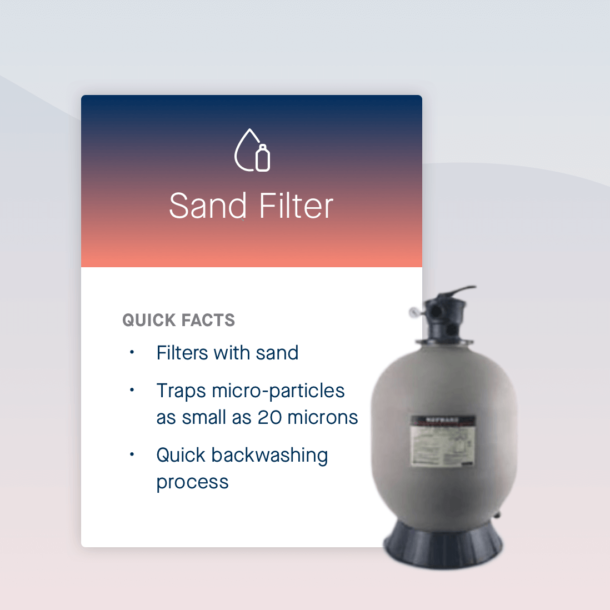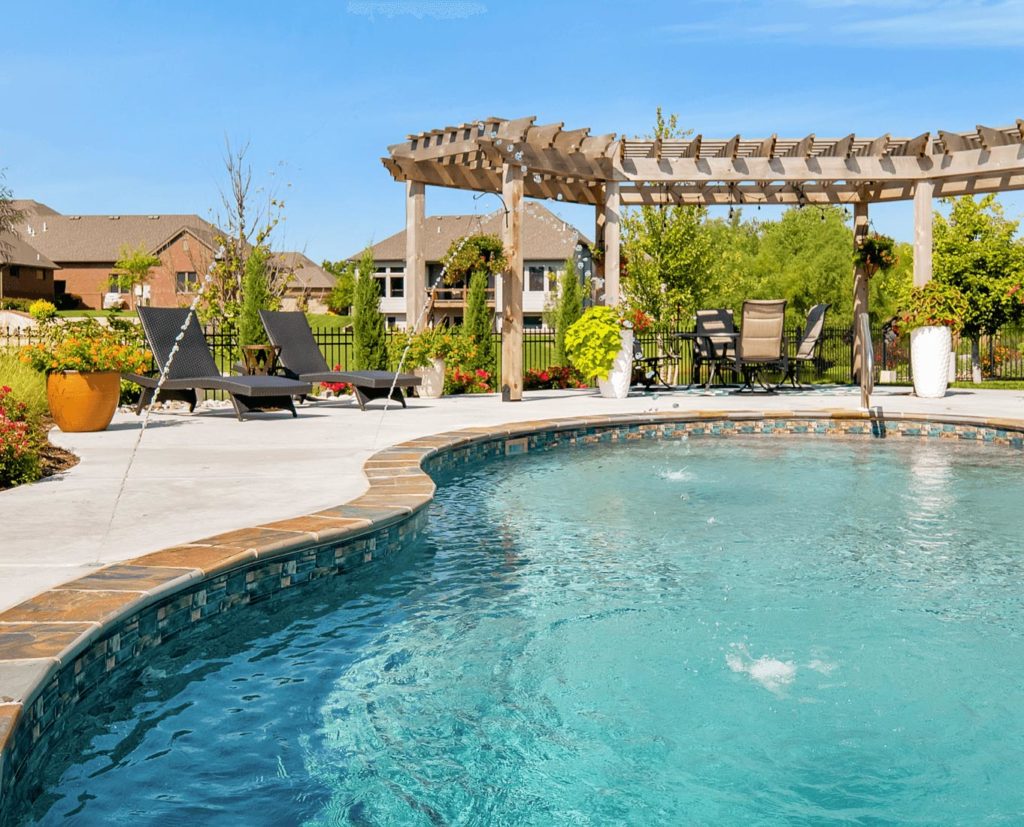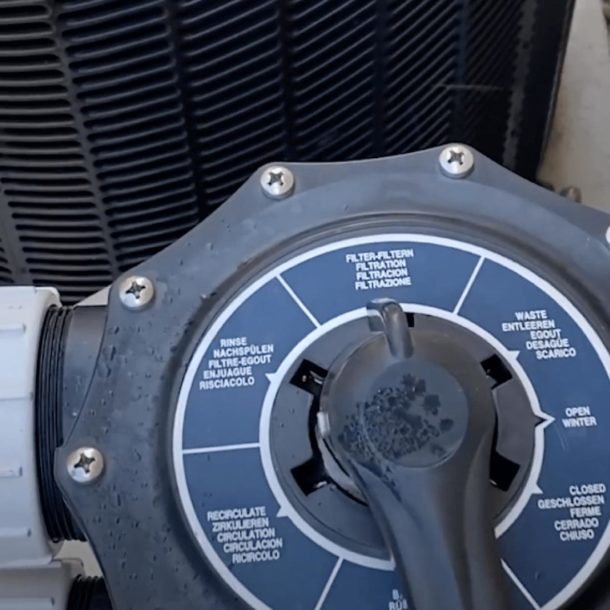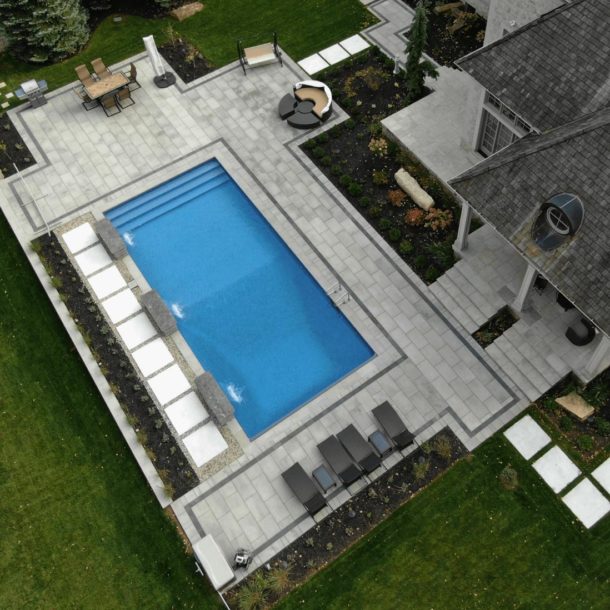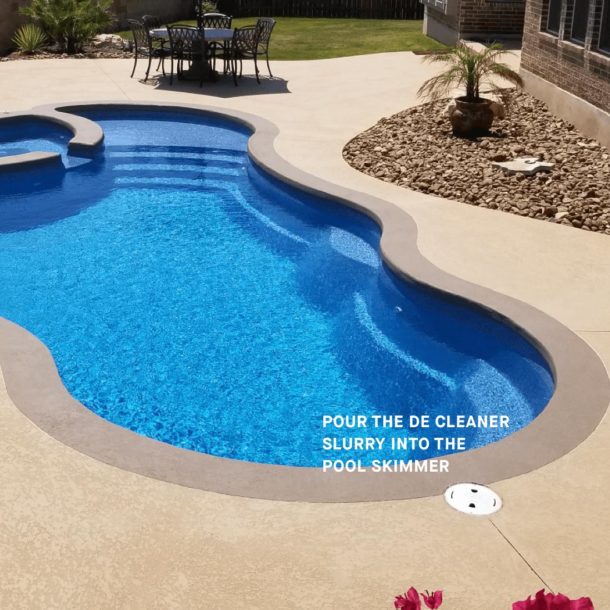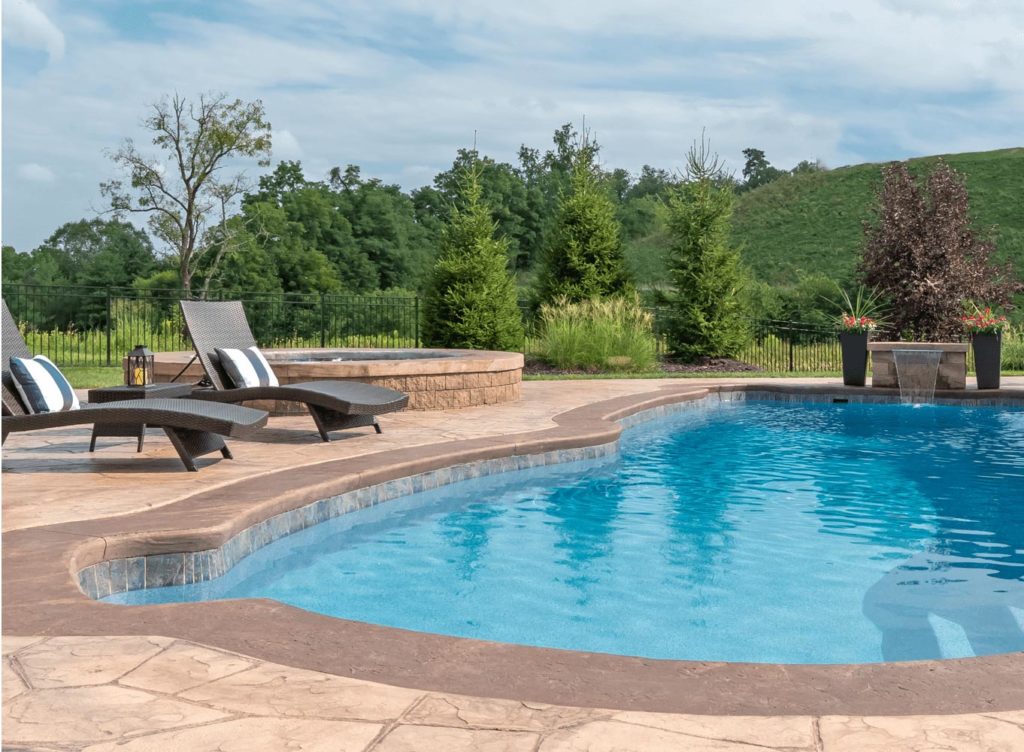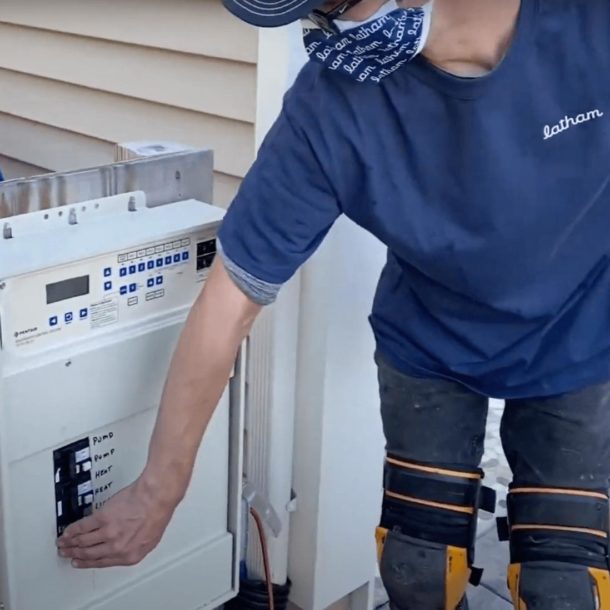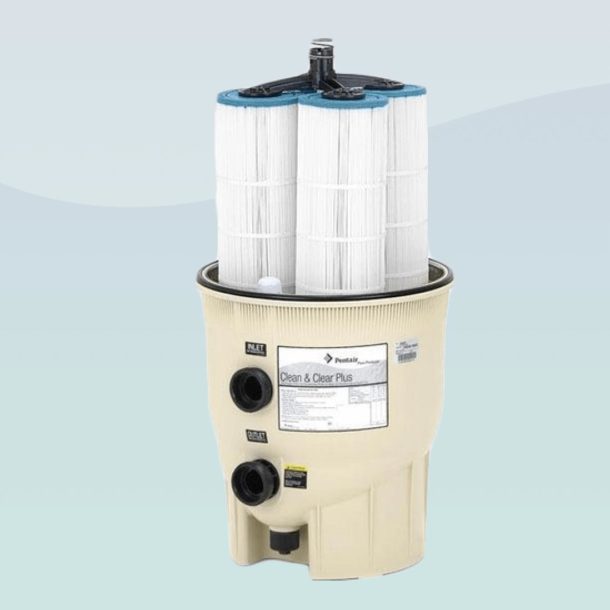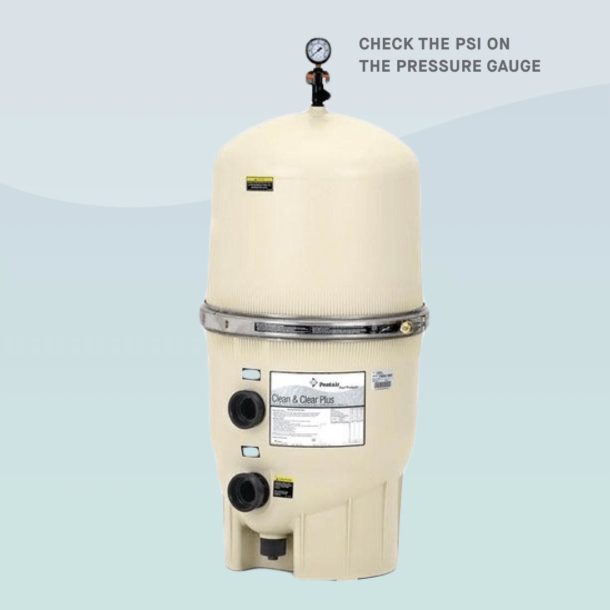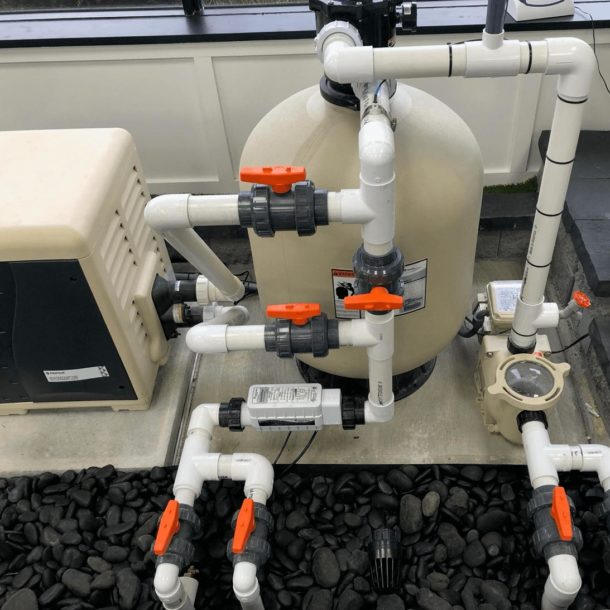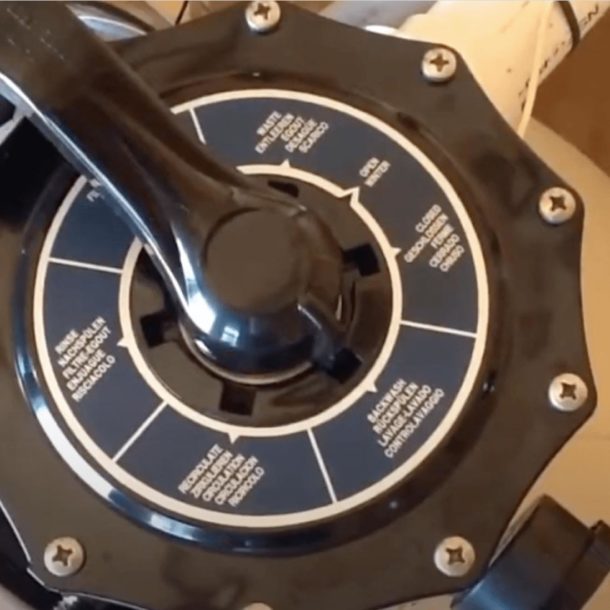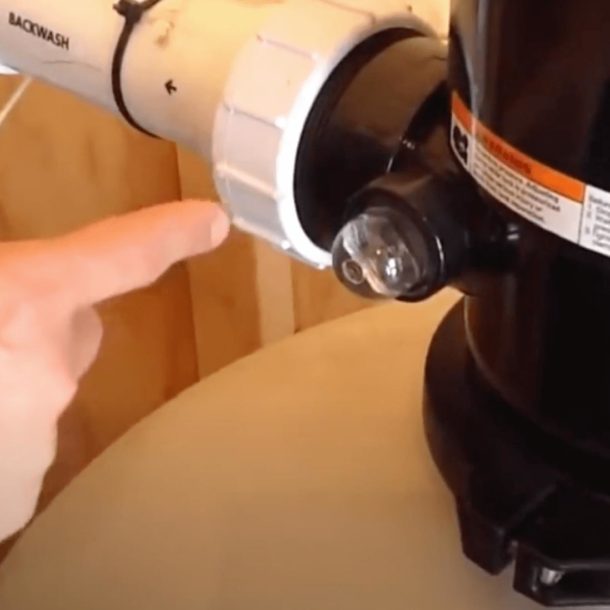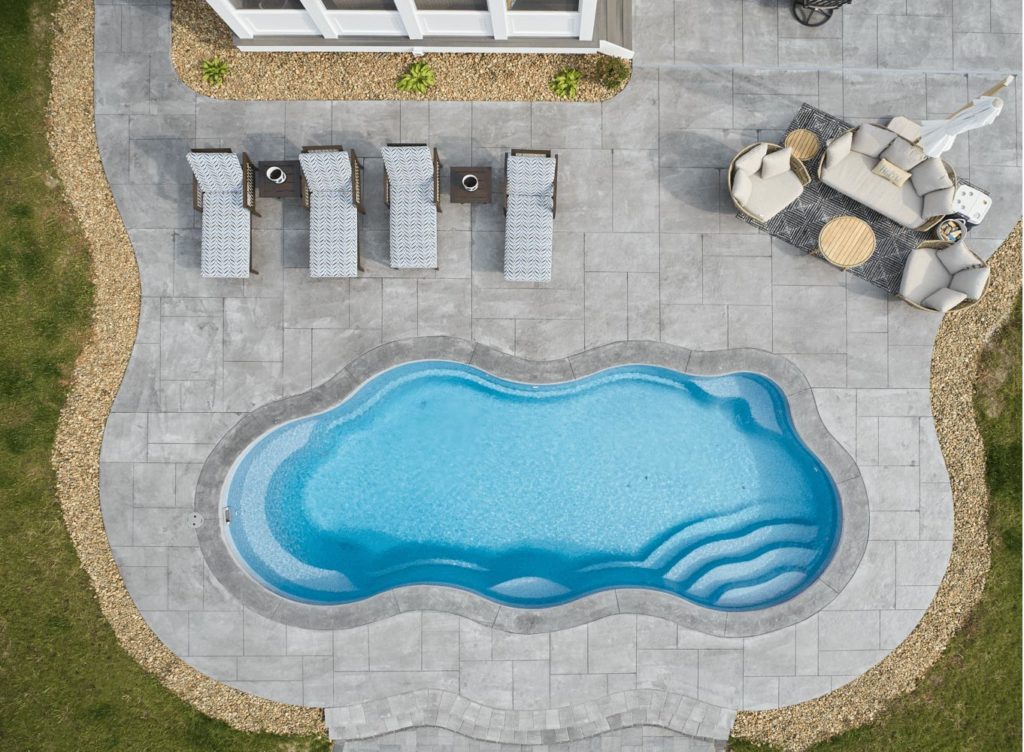Your pool filter is the unsung hero of your swimming pool. Hidden from view, it removes debris and other organics so you can enjoy countless refreshing experiences in clean, crystal clear water. The most important thing to remember when cleaning a pool filter is safety. You need to make sure you turn off and release the pressure properly to prevent injury and potential damage. Contact a Latham Independent Builder to answer any questions or concerns.
To clean an inground pool filter correctly, first identify which type of filter your pool is equipped with. There are three types of pool filters: sand, diatomaceous earth (DE) and cartridge filters. Each has its own pros and cons but it’s important to clean your filter regularly to ensure it’s operating efficiently.
Whether you have a sand, DE or cartridge filter, this guide will explain how to clean a pool filtration system.
DE Filters vs. Cartridge Filters vs. Sand Filters
Let’s start with the basics of how each pool filter works.
What is the Best Way to Clean a Pool Filter?
Before you buy a pool filter cleaning solution, determine which pool filter you have. The cleaning process is different for each one, though fundamentally, they all involve removing the accumulated dirt and debris.
Backwashing is a common technique used to clean DE and sand pool filters. Instead of pushing water through the filter to capture particles, you reverse the process to flush the contaminants out of the filter.
You cannot clean a cartridge filter by backwashing. The only way to remove the pool debris is by taking the cartridge apart and rinsing it thoroughly (only use a cleaning solution if it’s extremely dirty).
Learn More About Cleaning Your Pool Filter
The recommended cleaning interval is 1 to 3 weeks, but generally speaking, you should clean a sand filter when needed, there is no set time. The best way to tell if it needs to be cleaned is to use your eyes to check the clarity, flow and pressure. If the water is cloudy, hazy or green, you need to clean your filter. Also, if you don’t see any obvious visual signs, check the pressure gauge.
Each pool filter has a different threshold for how long it can go between cleanings and maintain the proper chemical balance of your pool water. The quality of your pool water is a big determinant, and that depends on how often you use your pool and its surrounding environment. However, you can always use the pressure gauge as a benchmark for when you need to clean, regardless of the type of pool filter. If the pressure is 8-10 PSI over its startup (freshly cleaned) level, it’s time to clean it.
Use the same backwashing technique for DE filters as you would for sand filters. There is no set time for how often you need to backwash a DE filter. The best rule of thumb is to do this when your pool needs it. Pressure is the best marker to determine when to backwash your filter.
Cartridge filters can go up to six months without cleaning but most likely will need to be rinsed sometime after the three-month mark, depending on pool balance and clarity.
Besides these general guidelines, you may have to clean your filter more or less depending on environmental factors and where you live to keep your pool filter clear of dirt, leaves and debris.
While the best way to clean a cartridge pool filter is with a reasonably powerful stream of water, using a pressure washer on a cartridge filter can do more harm than good. The key to cleaning a cartridge well is carefully dislodging the debris and particles embedded in the polyester filter.
Your pump and skimmer baskets are the first line of defense for keeping your pool clean. Anything that makes it past them will head straight to the pool filter.
Follow these steps to clean the skimmer basket:
- Turn off your pump
- Pull off the skimmer’s lid, pick up the basket and empty out all the debris
- Give it a good rinse
- Place it back in position
- Restart your pump
Follow a slightly more complicated process to clean the pump basket:
- If it was in use, turn off the heater and wait 5-10 minutes for it to cool down
- Close the main drain and skimmer valves
- Turn off the pump
- Reach inside to grab the pump basket, then remove the debris inside
- Rinse off the skimmer basket using a garden hose and examine it for damage
- Return it to its original location—if your pump basket is a twist-in model, do not over-tighten
- Check the pump lid and O-ring for signs of wear and tear, and smooth on some petroleum jelly if the O-ring appears dry
- Return pump lid and O-ring to their original places, then check that the filter valve is set to “filter” position
- Open the main drain valve and the pool filter’s air relief valve
- Turn the pump and heater back on
- Open remaining skimmer valves and close the air relief valve only when you see a consistent stream of water coming out of it
You should always use a pool filter cleaning solution to clean your cartridge filter. Make sure to contact your pool dealer to determine the best cleaning solution for your specific pool filter.
How to Clean a DE Filter
Diatomaceous earth filters are incredibly efficient, and—of the three filter options—the cleaning process is the most involved. You’ll need to backwash it and make sure it’s properly cleaned.
How Often Should You Clean Your DE Pool Filter?
Try to clean your DE filter at least once a month. Of all the filters, they remove the most grime and organics from your pool. The longer you wait to clean your DE filter, the less effective it becomes. Along with a monthly cleaning, always check your pressure gauge to confirm the pressure is no higher than 8 to 10 over the pressure level for a freshly cleaned filter.
How to Clean Pool Filter Cartridges
Simply clean a cartridge pool filter with plain water. For oily cartridges, soap and water or pool cleaning solution will do the trick.
Learn More About Cleaning Your Cartridges
You should aim to clean your cartridge when needed, depending on your pressure reading. Also, make sure to check for tears and damage. Beyond that, the best way to determine if you need to clean your pool cartridge filter is by checking the pressure on the gauge. A number between 8 and 10 PSI over what a brand new filter would show means it’s time to clean it.
Pool filter cartridges can last up to five years but typically need to be replaced sometime after three. You’ll be able to tell that the filter is not doing its job as effectively if your water takes on a greenish hue or you notice that you need to clean it more frequently than usual.
Keep in mind that good maintenance will help extend the life of your pool filter cartridge, so don’t slack on cleaning it!
You may have heard that you can use vinegar instead of a pool filter cleaning solution. While this may save you some money, for an effective cleaning, we recommend using an actual filter cleaning solution.
Just like vinegar, you may have heard household items like bleach work to clean your pool filter cartridge. We recommend only using a pool filter cleaning solution for maintenance purposes.
How to Clean a Sand Pool Filter
Both inground and above ground pools can use sand filters, which can be easy to clean. With any type of pool maintenance, however, we recommend contacting a Latham professional.
Sand filters are generally better suited for pools that are less likely to have organics or debris or they’re less maintenance than the other two.
Learn More About Cleaning Your Sand Pool Filter
Pool owners should aim to replace the sand in the filter every three to five years. However, the longevity of your sand depends on how often you use your pool. The more you use your filter, the shorter the lifespan of the sand. If your water chemistry is in balance but your pool begins to look cloudy, even after multiple filter cleanings, it’s a sign you may need to replace the sand.
It’s important to inspect your sand filter to know when it may need to be replaced. Look for these signs:
- Cloudy water—this could be a sign that your sand needs to be replaced, your sand filter is clogged or sand bed is contaminated
- Dripping multiport valves—leaky valves aren’t a sand filter problem per se, but they do impact your filter’s effectiveness
- Sand in your Pool—if you have a damaged lateral, they will allow sand to pass through and into the pool in the return lines. Look for sand beneath your return fitting. Sand will come out of the fitting and fall right to the floor
- Broken valves—valve failure renders your sand filter virtually useless
- Split tank—a ruptured tank will need to be replaced. If you see any signs of fracture, turn your filter off immediately
- The pressure is too high—If your filter isn’t functioning properly, it most likely needs cleaning. Low pressure means less restriction—too low could indicate your return fittings are missing. Low pressure isn’t a problem as long as the flow is there
Pool Filter Cleaning Checklist
Download our free step-by-step checklist for cleaning different types of pool filters, including diatomaceous earth (DE) filters, pool filter cartridges and sand filters.
Need Help Cleaning Your Pool Filter?
Cleaning and maintenance is an essential part of being a responsible pool owner. It can be confusing, for first-time owners. If you have any questions about cleaning your pool, don’t hesitate to contact us! We’ll resolve your toughest pool cleaning concerns.
Learn More About Pool Maintenance
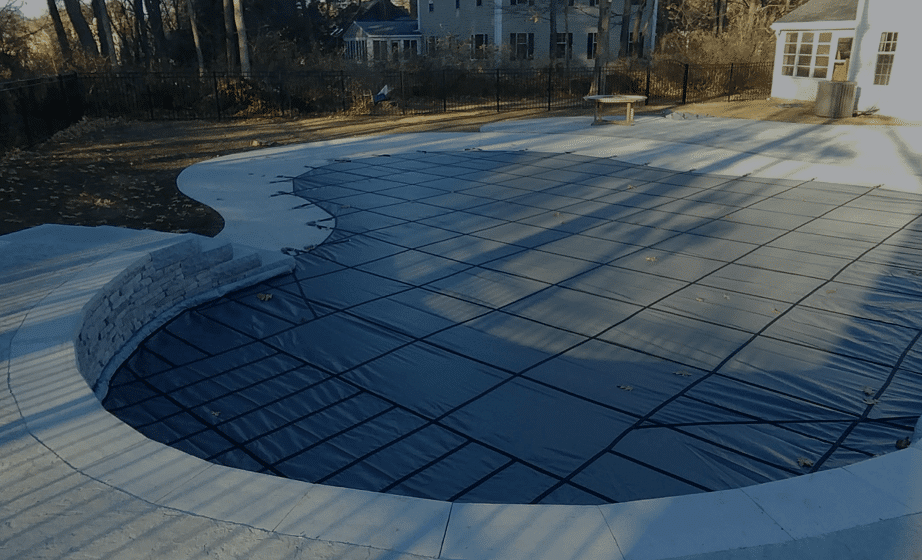
How to Winterize an Inground Pool
If you live in an area that experiences periods of freezing and thaw, there are necessary steps you should take to winterize your pool. Learn how to close your pool and protect your investment during winter months.
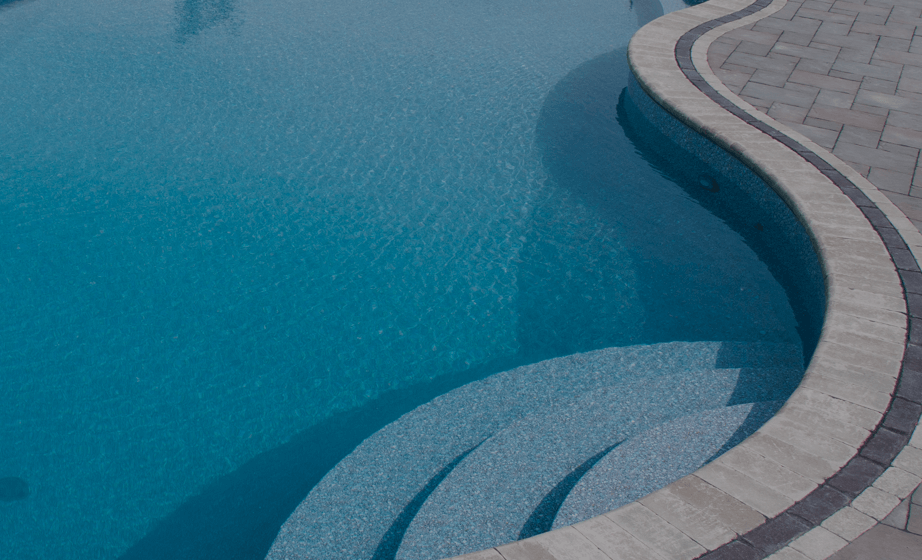
How to Shock Your Swimming Pool
Sanitizing your pool involves balancing chlorine and chemical levels to destroy bacteria and algae that can put a damper on your fun. Learn how to sanitize your chlorine or saltwater pool.
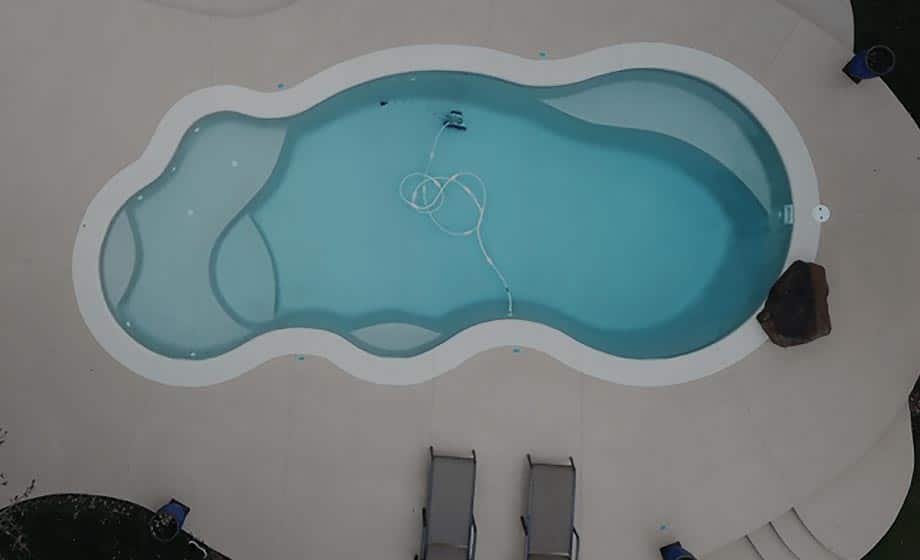
View All Maintenance Topics
If you’re new to pool maintenance, don’t worry! We’ve got you covered with resources that outline best practices for the basics of caring for your pool.
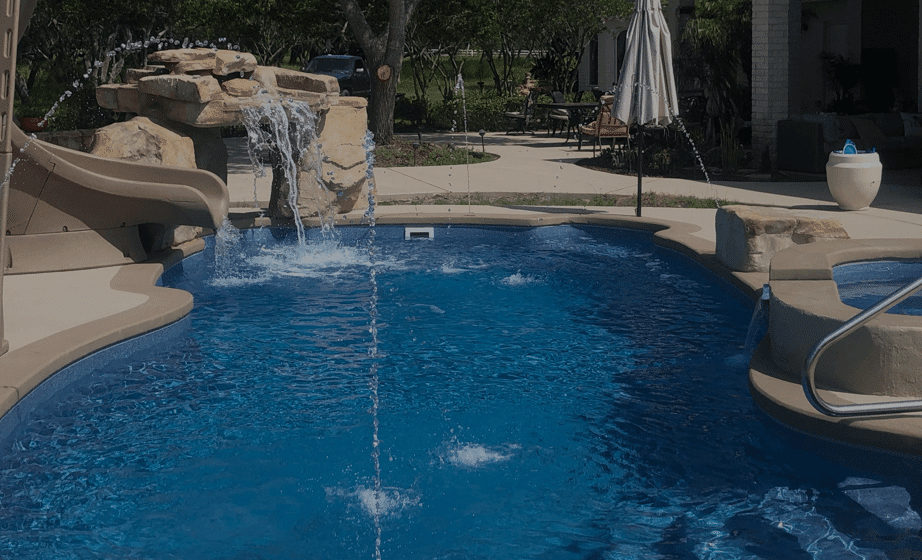
How to Open an Inground Pool in the Spring
Springtime heralds the dawn of greenery, sunshine and the promise of warmer temperatures. It’s also the perfect time to open your pool for the season! From the chemicals needed for pool startup to the best time to prep your pool for the season, learn everything you need to know about the pool-opening process.
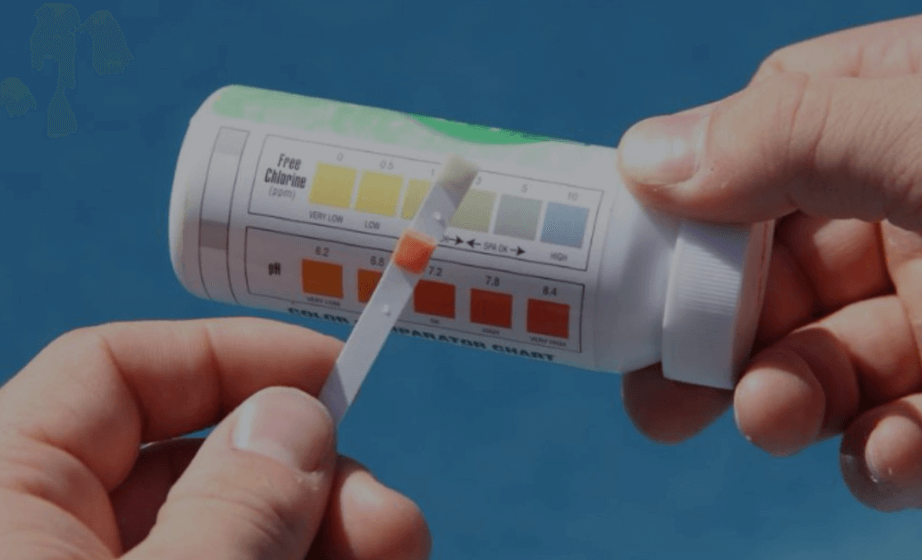
Methods For Testing Water Chemistry
Balancing your pool’s water chemistry is essential to keeping water clear, preventing damage and getting the most enjoyment out of your pool. Get tips for creating the right chemical environment for your pool.
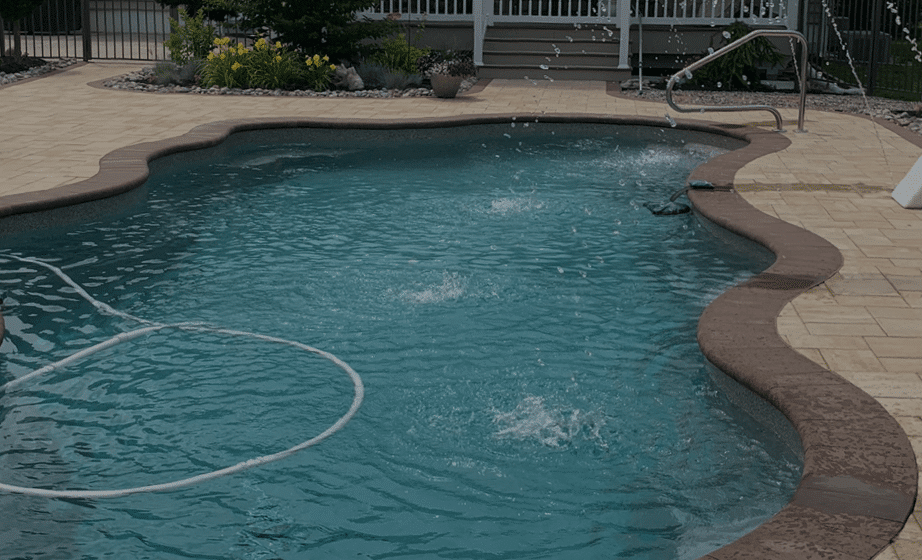
How to Clean an Inground Pool
From stain removal to using a pool vacuum, check out best practices for cleaning your inground pool and keeping it crystal clear!


